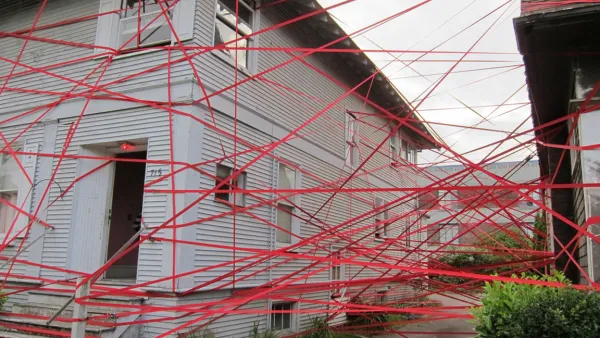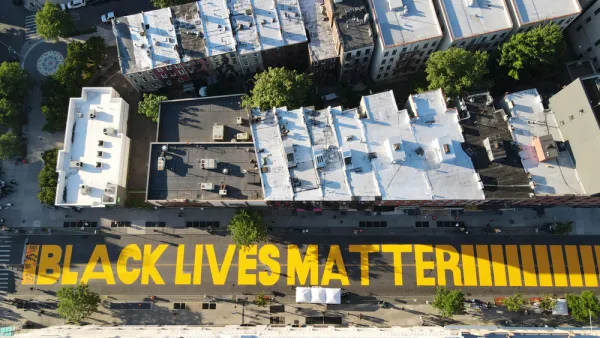At the CNU-FL statewide meeting held last week, Andrés Duany articulated his vision for how planning must adapt to the new realities of "national impoverishment" and climate change by utilizing the tools of tactical urbanism, writes Erin Chantry.
Acknowledging that two key issues that have emerged in the last five years - pervasive impoverishment from the Great Recession and the "psychological shifts of impending climate change" - have called into question the principles of New Urbanism that he had helped codify, Duany elucidated the tools that will be necessary for the changing practice of planning and urban design.
"Lean. Guerilla. Incremental. Vernacular. Tactical."
"On the other side of the economic downturn, or at least a good way through it," says Chantry, "Duany learned that the future of New Urbanism was in the ability for the organization and it’s professionals to be adaptable, incremental, and minimal. In other words, Duany said 'an urbanist does the least necessary and lets everyone else naturally do the rest.'”
He pointed to the transformation of the Wynwood Arts District in Miami as a prime example of the type of long-term change through small and short-term actions that's at the heart of the tactical urbanist movement. "The neighborhood’s ability to redevelop through adaption with small incremental change is an example of how our industry must shift to address the changing priorities of the future planning profession," notes Chantry.
As an avowed, but conflicted, New Urbanist, she, for one, is pleased with the tactical shift. "[B]y Duany proclaiming that his 'heavy, armored brigade' idea of urbanism (i.e., the rules, guides, and strict formulas) has become irrelevant, he has immediately made New Urbanism more relevant to my beliefs as an urbanist."
FULL STORY: The New, New Urbanism

National Parks Layoffs Will Cause Communities to Lose Billions
Thousands of essential park workers were laid off this week, just before the busy spring break season.

Retro-silient?: America’s First “Eco-burb,” The Woodlands Turns 50
A master-planned community north of Houston offers lessons on green infrastructure and resilient design, but falls short of its founder’s lofty affordability and walkability goals.

Delivering for America Plan Will Downgrade Mail Service in at Least 49.5 Percent of Zip Codes
Republican and Democrat lawmakers criticize the plan for its disproportionate negative impact on rural communities.

Test News Post 1
This is a summary

Test News Headline 46
Test for the image on the front page.

Balancing Bombs and Butterflies: How the National Guard Protects a Rare Species
The National Guard at Fort Indiantown Gap uses GIS technology and land management strategies to balance military training with conservation efforts, ensuring the survival of the rare eastern regal fritillary butterfly.
Urban Design for Planners 1: Software Tools
This six-course series explores essential urban design concepts using open source software and equips planners with the tools they need to participate fully in the urban design process.
Planning for Universal Design
Learn the tools for implementing Universal Design in planning regulations.
EMC Planning Group, Inc.
Planetizen
Planetizen
Mpact (formerly Rail~Volution)
Great Falls Development Authority, Inc.
HUDs Office of Policy Development and Research
NYU Wagner Graduate School of Public Service




























